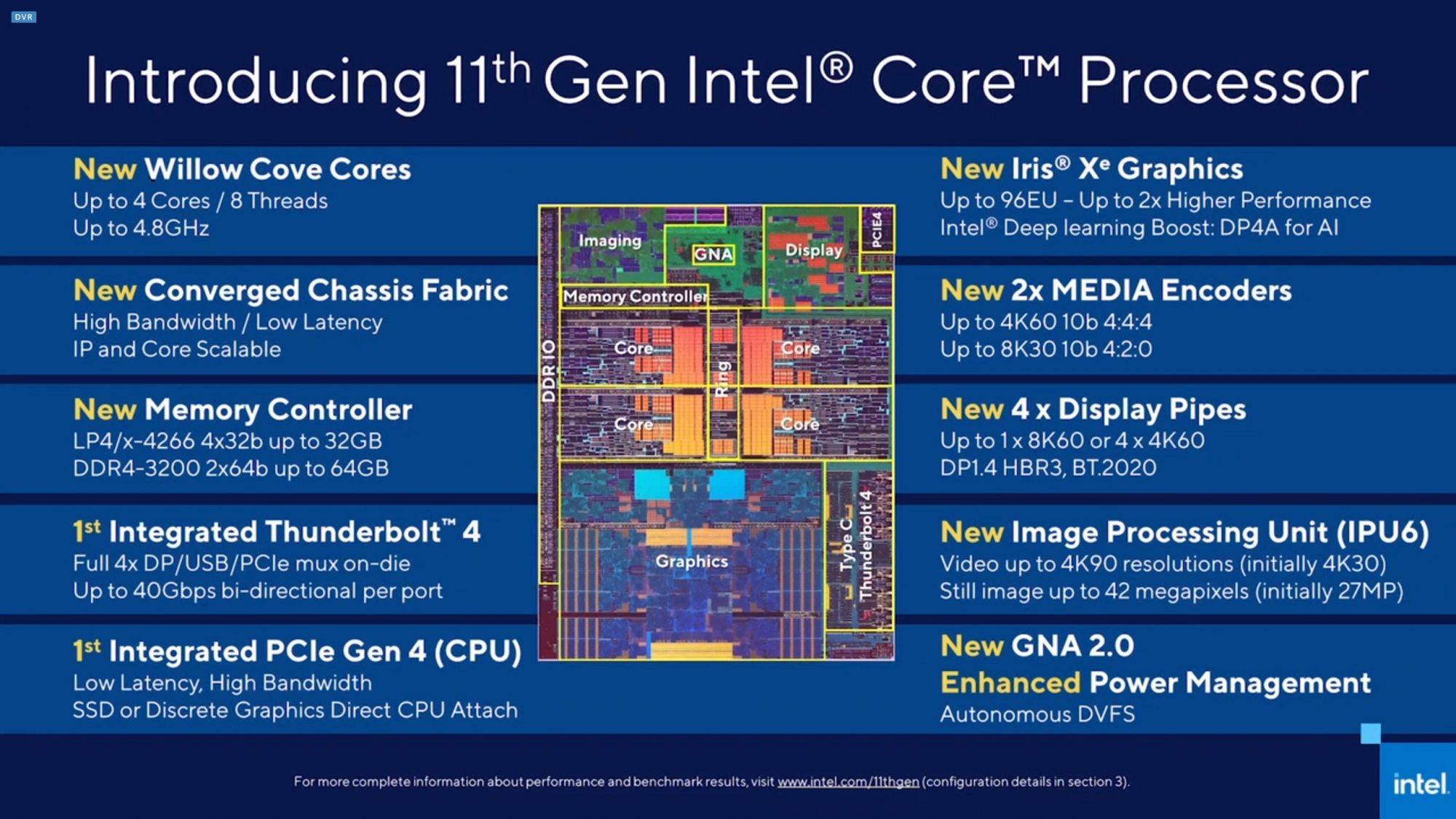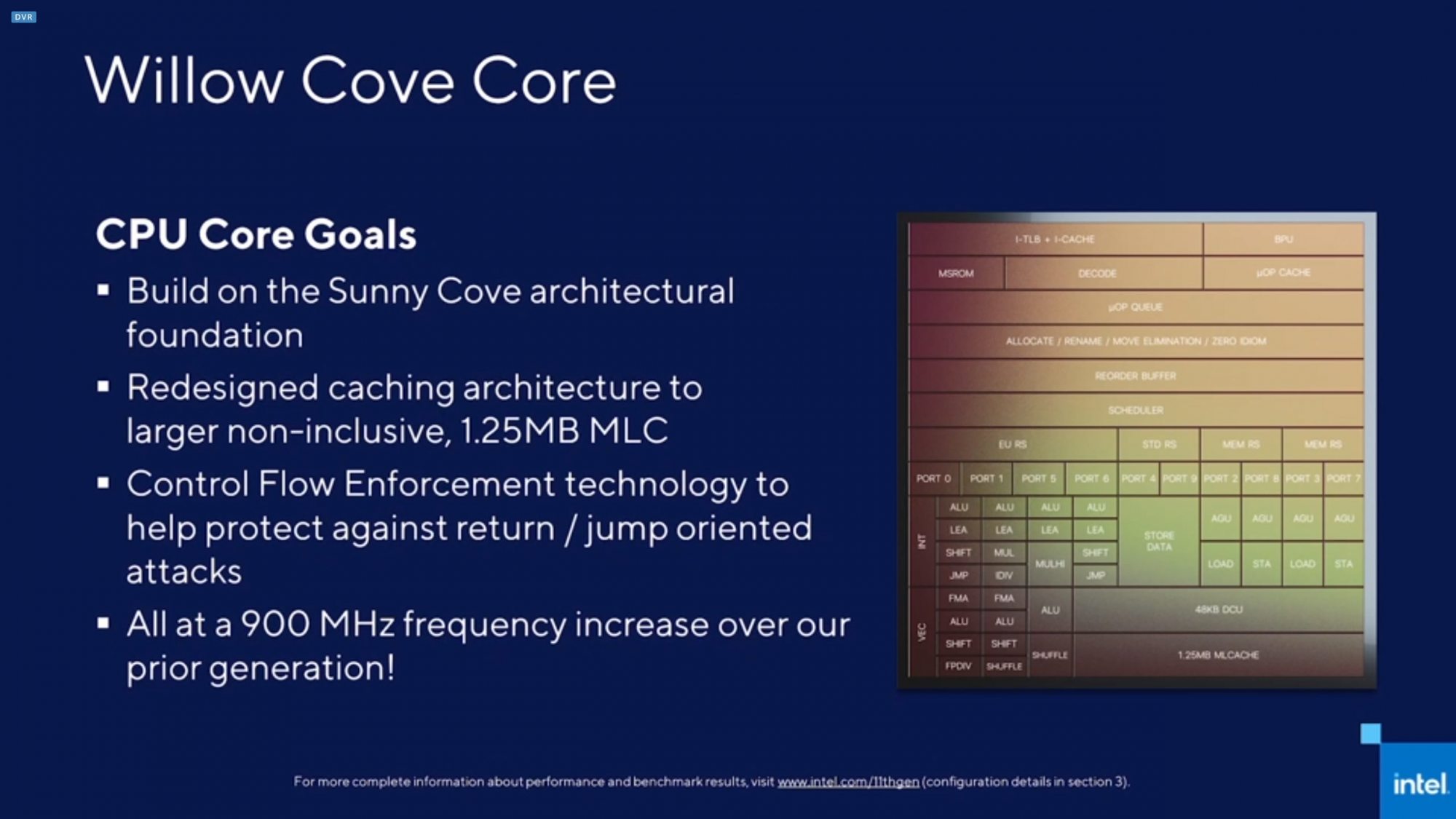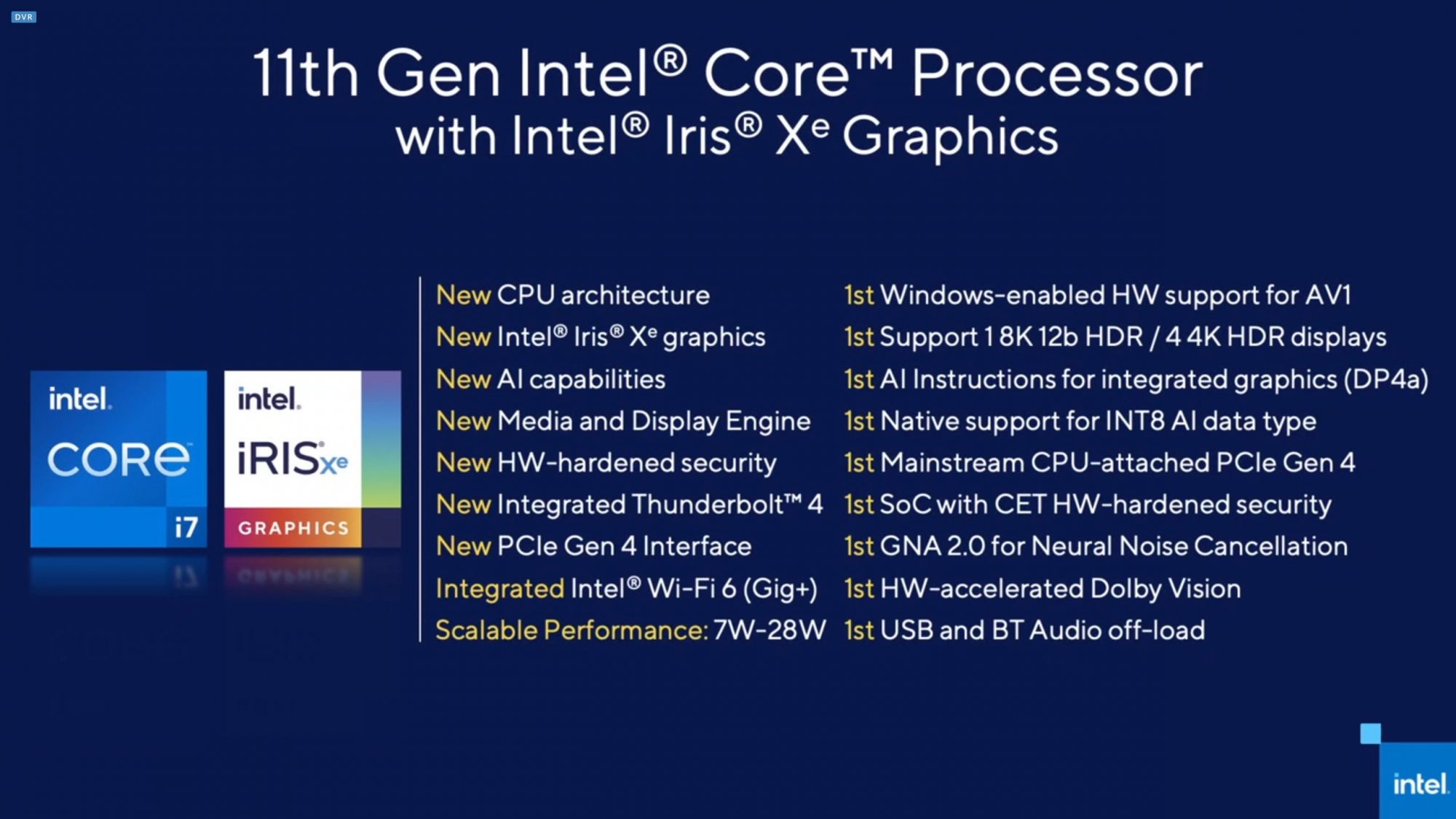Intel has officially released Tiger Lake, its 11th generation mobile processor along with Intel Evo design standard.
After the wild naming schemes of its 10th generation mobile processors, Tiger Lake’s simpler naming convention, unveiled Sept. 2, was a welcoming change. In addition to dividing the processors into the traditional Core i3, i5, and i7 series, Intel has also separated them into UP3 and UP4 categories based on their TDP. UP3 processors range between 12W to 28W, while UP4 processors range between 7W to 15W. They are further segmented by their graphics performance, which is denoted by their suffix.

At launch, Tiger Lake processors will range between two to four cores. At the top of the stack is the Intel Core i7-1185G7, which can hit up to 4.8GHz on single-core turbo and 4.3GHz on all-core turbo. Its single-core turbo speed is significantly higher than Intel’s previous flagship mainstream processor, the Core i7-1065G7, rated at 3.90GHz.
The entire Tiger Lake product lineup is built on Intel’s Willow Cove core, which is a brand new architecture built on Intel’s new SuperFin 10nm transistors. SuperFin increases the transistor drive current through an improved gate process while reducing electrical resistance in its metal layer.
Combined with architecture improvements, Intel promises Willow Cove will be able to hit higher frequencies, both at base and boost, than Sunny Cove. It will also be able to sustain higher frequencies for longer and reach much higher max frequencies, up to 4.8GHz, according to its launch presentation slide.
Related:
Big cat swims: Intel details Tiger Lake and SuperFin transistors
Core improvements aside, Intel has greatly increased the mid-level cache size to hold more instructions. Willow Cove now features up to 1.25MB of L2 cache–three times more than the previous generation. Although having a larger cache could potentially lead to increased latency, an Intel spokesperson noted that because the cache operates at a much higher frequency, latency is reduced overall.
Tiger Lake also uses Intel’s new Xe graphics engine. Despite the lower-end graphics still labelled UHD graphics, they’re based on the new Xe graphics core. The higher-end Iris Xe graphics make it abundantly clear that they’re based on Intel’s new graphics smarts. Intel explained during its product launch presentation that this is to differentiate the experience they’re aiming to achieve. Basically, the Iris Xe graphics have between 80 to 96 execution units, while the UHD graphics have 48.
Since its 10th generation, Intel has been focusing on increasing its processors’ AI performance. Tiger Lake improves upon Coffee Lake’s AI smarts by adding DP4a Deep Learning Boost and native support for INT8 data type. Together with an improved Gaussian and Neural Accelerator, Intel boasted that Tiger Lake’s AI subsystem can achieve up to five times higher AI performance. During the presentation, Intel showed off AI-accelerated tasks including subject select in Photoshop, dynamic background blur during video conferencing, and image sorting based on subject type, among others.

Other Tiger Lake features include DDR5 RAM support and four PCIe 4 lanes linked directly to the CPU. The PCIe lanes will be primarily used for PCIe 4 SSDs. Routing the PCIe lanes directly to the CPU reduces latency between the SSD and the processor. Tiger Lake will also natively support Thunderbolt 4 and Wi-Fi 6.
Laptops equipped with Tiger Lake will start to arrive this fall. Prominent designs include the new Dell XPS 13, Lenovo Yoga 9i, Asus ZenBooks, as well as designs from HP, LG, Samsung, and others.
Along with Tiger Lake, Intel has pushed Project Athena, its experience-based laptop design standard, into phase 2. Dubbed Intel Evo, the second phase of Athena promises system wake from sleep in less than one second, at least nine hours of battery on a single charge on laptops with 1080p displays, and at least four hours of use time on a 30-minute charge. It also requires Thunderbolt 4 ports, Intel WiFi 6 (Gig+) wireless connectivity, and requirements on audio, webcams, and display.




